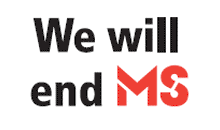Overcoming Multiple Sclerosis
Restoring Pathways is part of a series written by Health Services Navigator, Teena Marie Johns. Here Johns shares some of her experiences living with Multiple Sclerosis as well as her observations and learnings of constructive health practices.
As well as my physical rehab, I use diet as part of my treatment plan. Several years ago, I read a good book called Overcoming Multiple Sclerosis by George Jelinek, an Australian doctor with MS. I looked at it again recently and it made good sense, especially the focus on reduction of saturated fat to as low as 5-10 grams daily. I’m going to try it – already I’m very careful. It will be interesting to see how it impacts on my body. After all, the Swank MS diet, essentially the same diet, showed a slowing of the MS process.
In the meantime, keeping the body moving makes me happy. I have this belt called a swim mill, which I use in my pool. I strap it around my waist and tether myself to the ends of the pool and swim on the spot. There’s something about the windmill action of the front crawl which stimulates some pathways in my walking. Yesterday, I did the equivalent of 6 lengths and then went for a delightful walk in my neighborhood, something I haven’t done in close to a year. I could feel a tingling in my lower back and legs. It felt like something waking up.
I tried it again today before going to work. It certainly helped, but I got so cold getting out with the north wind, that it made me stiffer for a short time. The biggest frustration is that it doesn’t last. It wears off. However, getting out from work went well. I just feel so much more solid (even though it’s slow).
All in all, I feel good. The difference is I have confidence again. I lost it for a short time in March and April and it was awful, almost like I’d given up on myself. I hope not to experience that again.
Read the next post from Teena Marie on Restoring Pathways
MS Clinical Trial to Improve Walking Speed
Read previous posts from Teena Marie on Restoring Pathways
Transitioning to forearm crutches
Never giving up hope
Teena Marie Johns is a registered nurse with over 35 years of expertise in the field of vaccination, pediatric infectious disease and more recently as a health service navigator. Living with MS since 1998, she manages her health through rehab therapy, meditation and Qi Gong.
Qigong is a form of Energy medicine. Considered a major branch of and precursor to Traditional Chinese Medicine, Qigong incorporates Mind-Body Interventions, and is also a Manipulative and Body Based Therapy.




 and get Cash rewards!
and get Cash rewards!